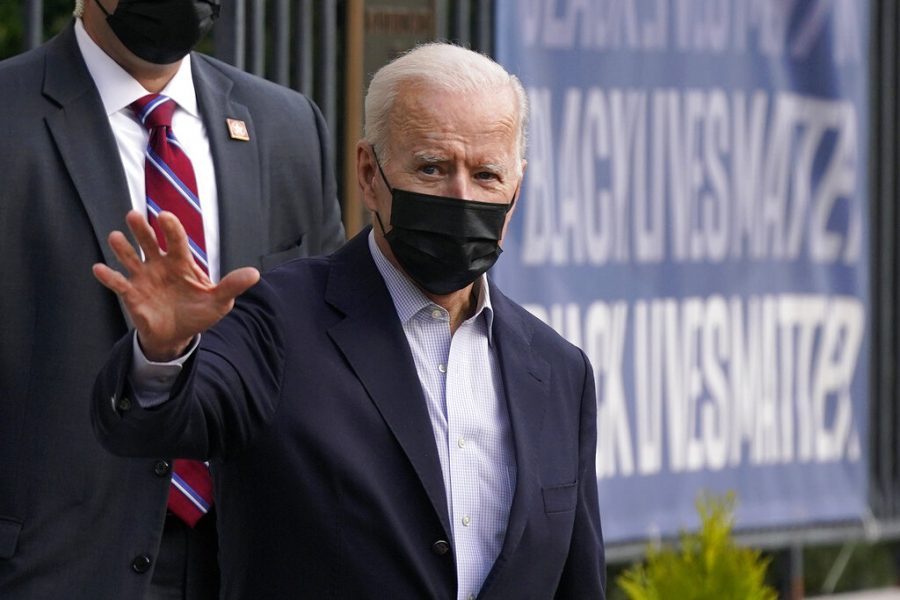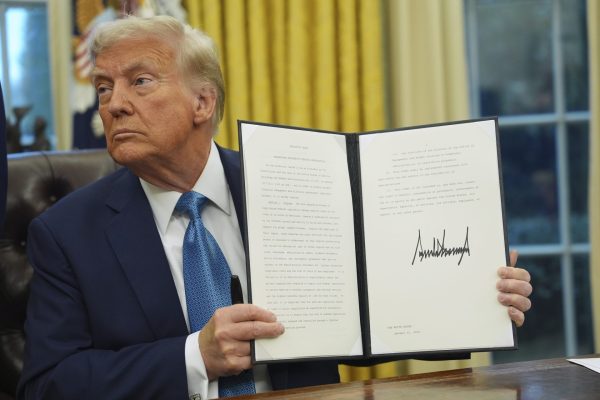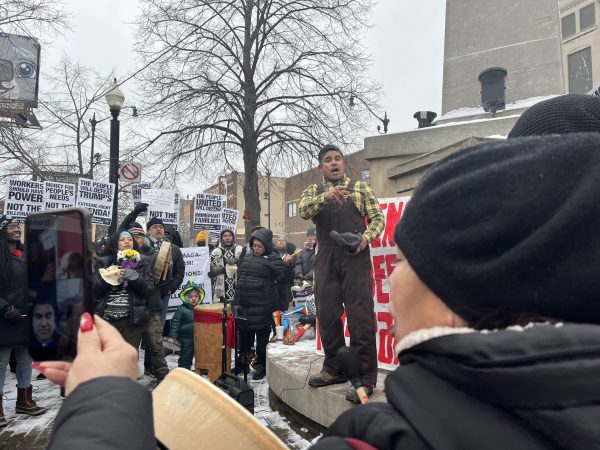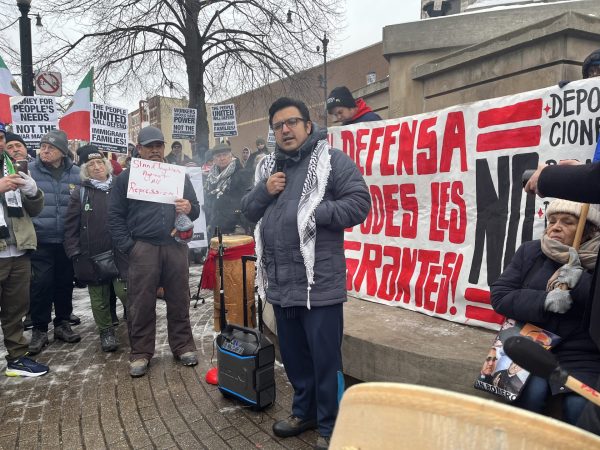The climate crisis is embedded in Biden’s American Jobs Plan
President Joe Biden waves as he departs after attending Mass at Holy Trinity Catholic Church in the Georgetown neighborhood of Washington, Saturday, April 10, 2021. (AP Photo/Patrick Semansky)
On March 31, President Biden unveiled a $2 trillion plan that seeks to boost the nation’s infrastructure while furthering the president’s agenda to rebuild the economy and address climate change and racial inequity.
“Today, I’m proposing a plan for the nation that rewards work, not just rewards wealth. It builds a fair economy that gives everybody a chance to succeed, and it’s going to create the strongest, most resilient, innovative economy in the world,” Biden said when unveiling the plan in Pittsburgh.
Kelly Tzoumis, a public policy professor at DePaul who’s interested in environmental policy, says that she is especially pleased by the investment in racial equity that is integrated into the American Jobs Plan.
Among the provisions in the plan that are aimed at enforcing racial equity, Biden proposes to address air pollution which disproportionately impacts communities of color. In addition, the plan aims to eliminate lead pipes and service lines in drinking water systems which would also impact communities that struggle to get a clean water supply.
“It shows a sophistication that this administration understands and it ties climate change to those environmental justice impacts,” Tzoumis said of the plan’s incorporation of racial inequity in addressing climate issues.
As for investments in transportation, the American Jobs Plan would invest $174 billion to support electric vehicles (EV). It aims to enable automakers to spur domestic supply chains for the production of EV, establish grant and incentive programs to build a network of 500,000 EV chargers by 2030 and will replace 50,000 diesel transit vehicles and electrify at least 20 percent of yellow school buses.
Barbara Willard, an environmental communication professor at DePaul, says that this aspect of the plan will not only reduce greenhouse gas emissions but provides funding for American jobs.
“It’s exciting because, of course, it’s going to reduce that major source of greenhouse gas emissions which comes from our transportation,” Willard said.
Tzoumis also says that she is pleased with the plan’s investment in research and development. Biden is calling on Congress to invest $35 billion in research to address the climate crisis. As detailed in the plan, the research would target developing new methods for reducing emissions and expanding funding for climate research. It will also invest $15 billion in demonstration projects including utility-scale energy storage, floating offshore wind and electric vehicles.
Biden’s plan, however, is still criticized by environmental advocates who say that it is not enough. Rep. Alexandria Ocasio-Cortez, who has been a strong advocate for environmental policy, was among the critics of the plan who said that it needed to be bigger.
“This is not nearly enough,” Ocasio-Cortez said in a tweet. “The important context here is that it’s $2.25T spread out over 10 years. For context, the Covid package was $1.9T for this year *alone*, with some provisions lasting 2 years. Needs to be way bigger.”
Mark Potosnak, an environmental science professor at DePaul, says that we do need to move faster in regards to the climate crisis but the issue is complicated because of how embedded it is in the economy.
“Yes, we need to move faster but we also really need to wrap our heads around the type of problem we’re facing,” Potosnak said. “It’s just so intrinsic to our entire economy but not just our economy, but our way of life.”







